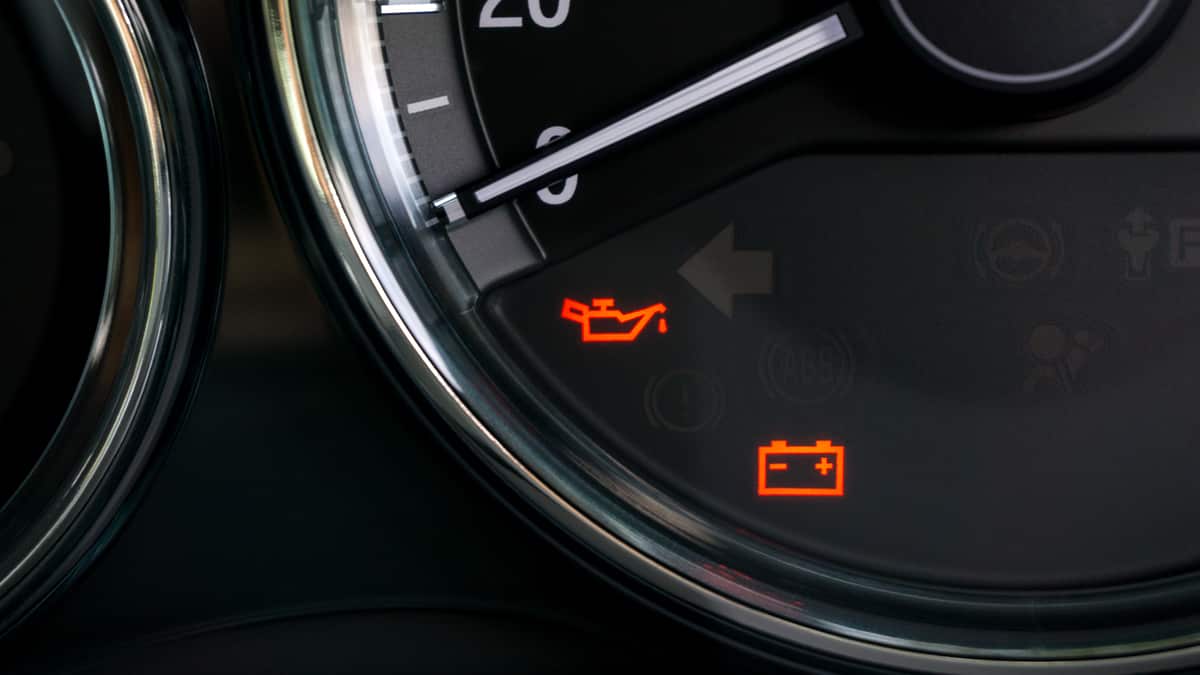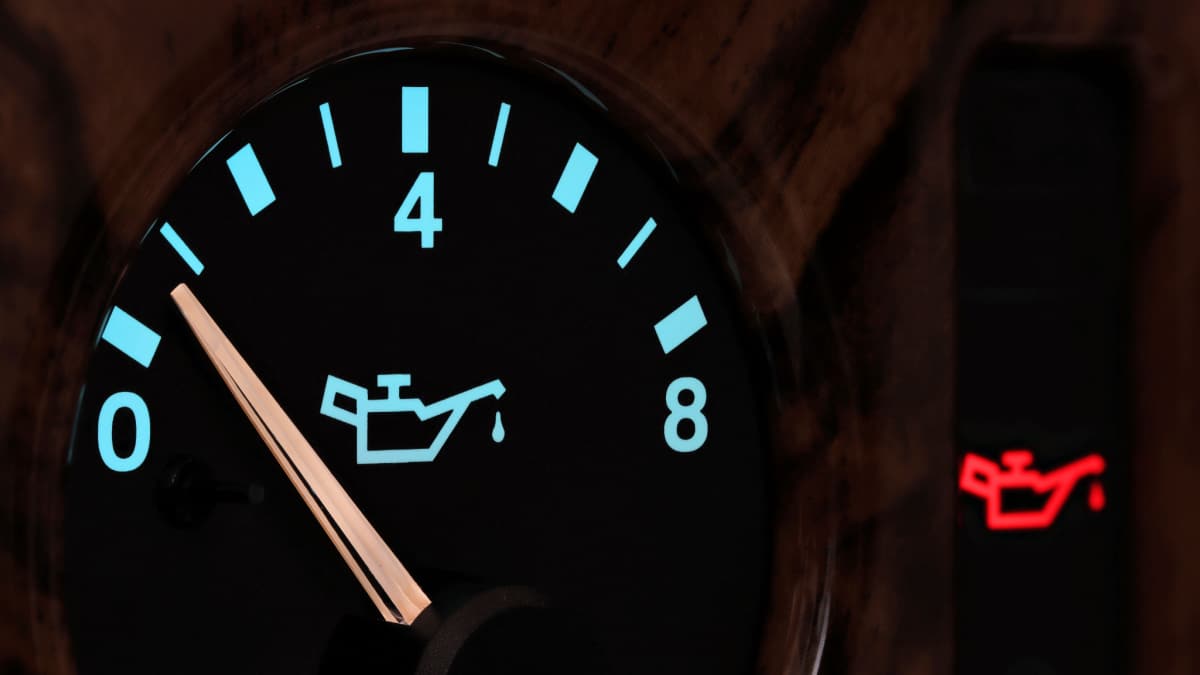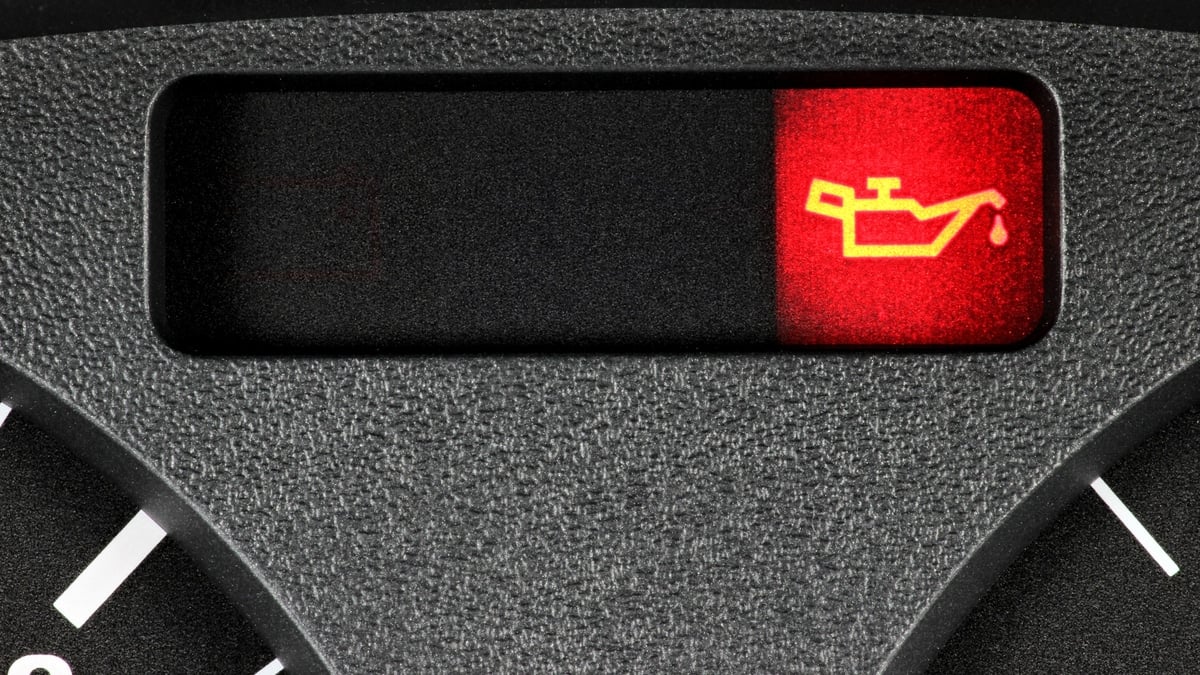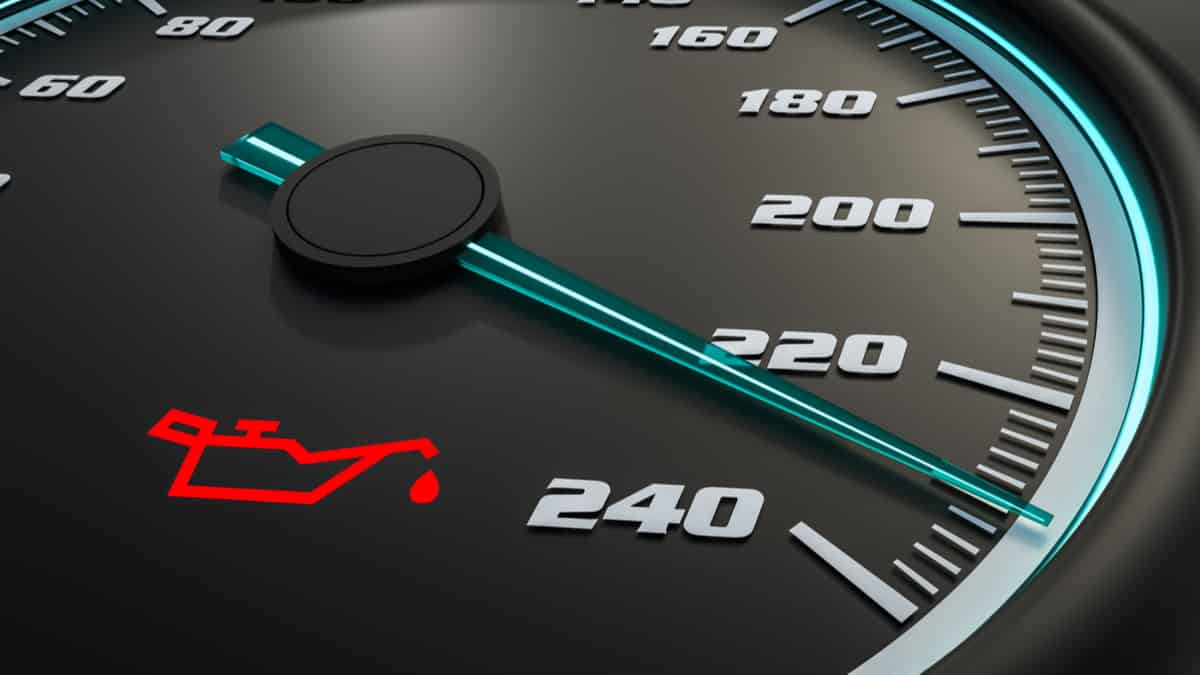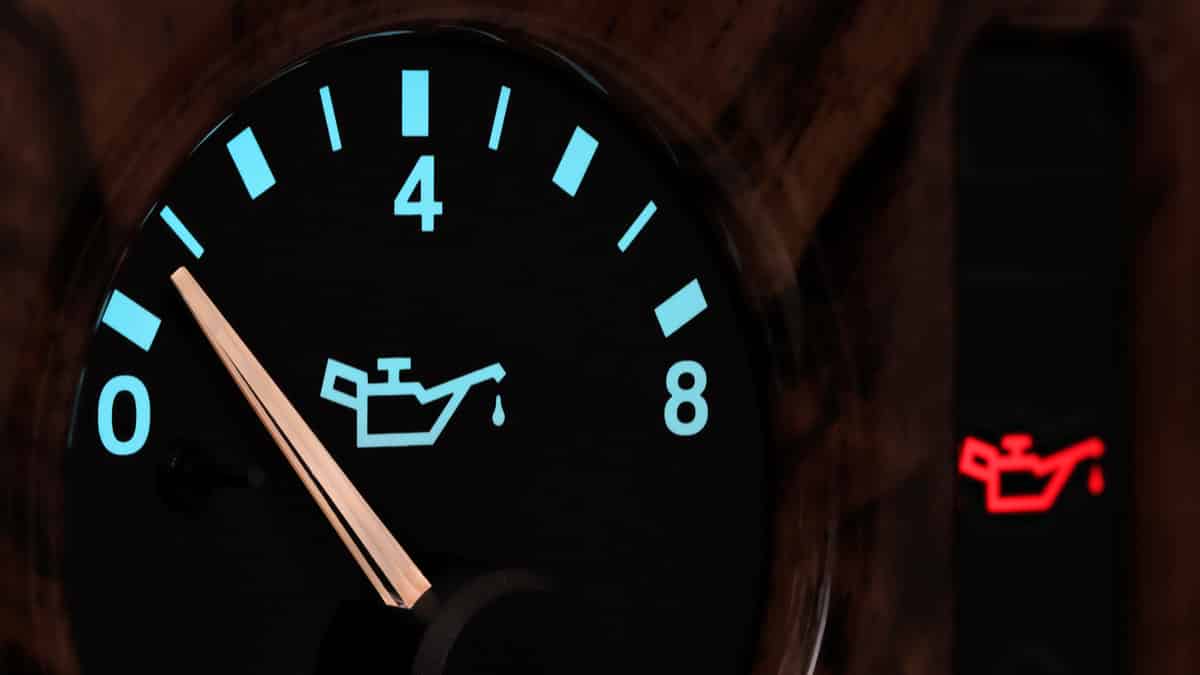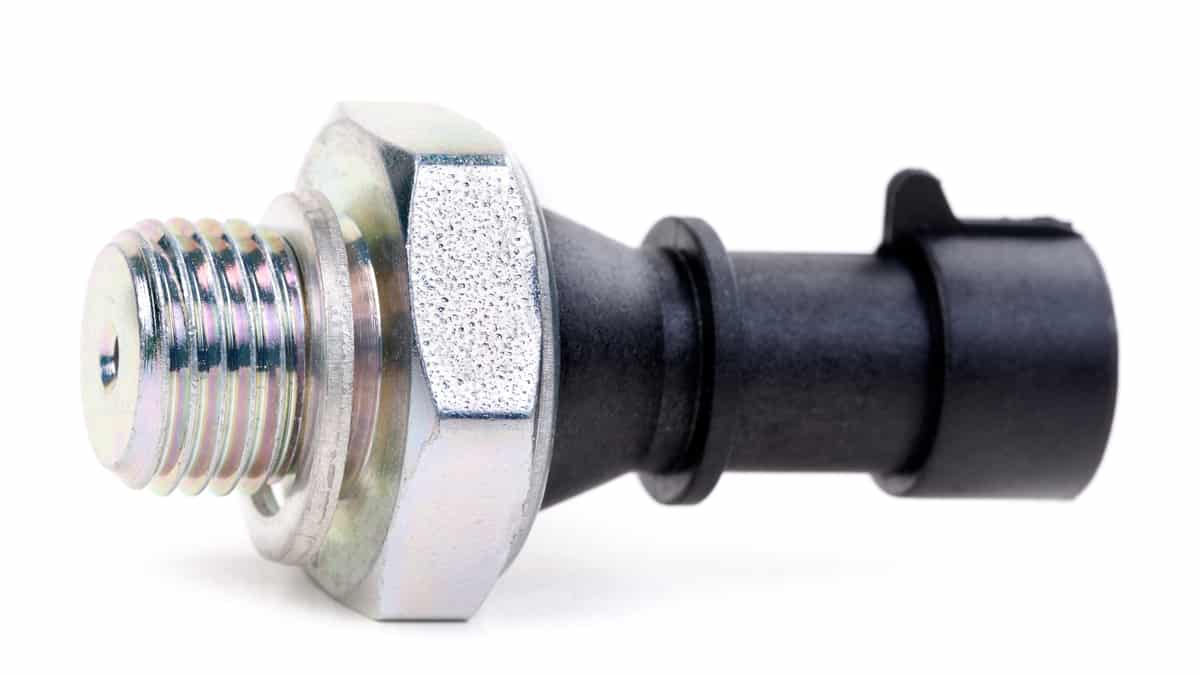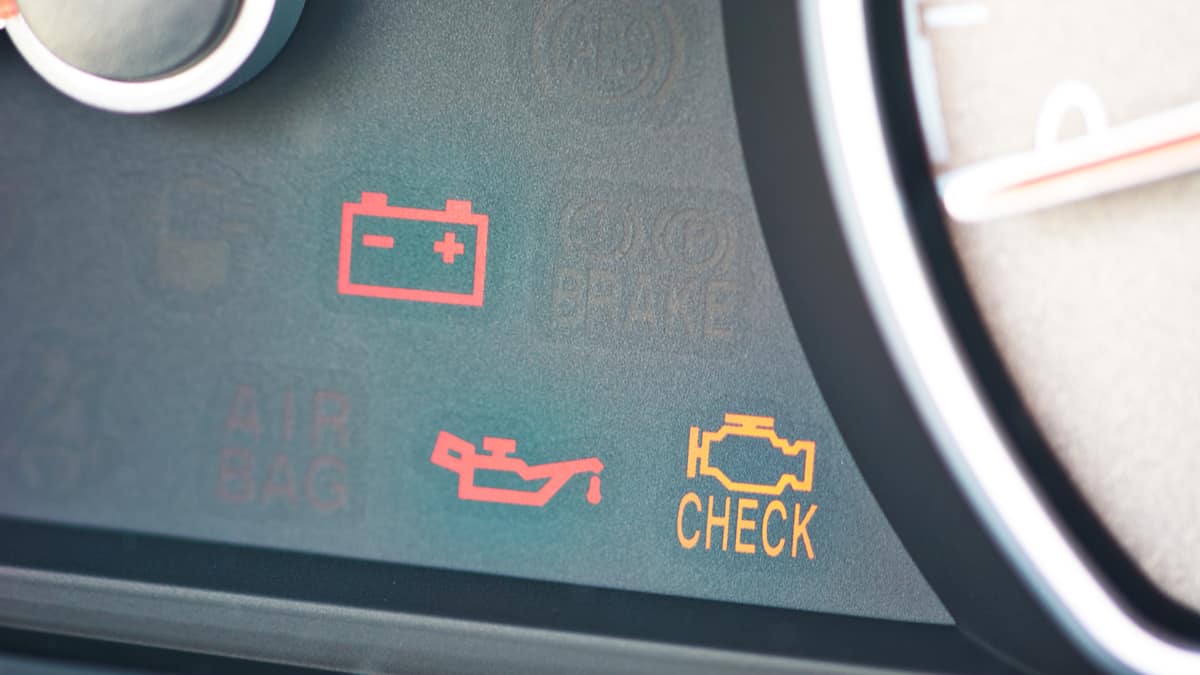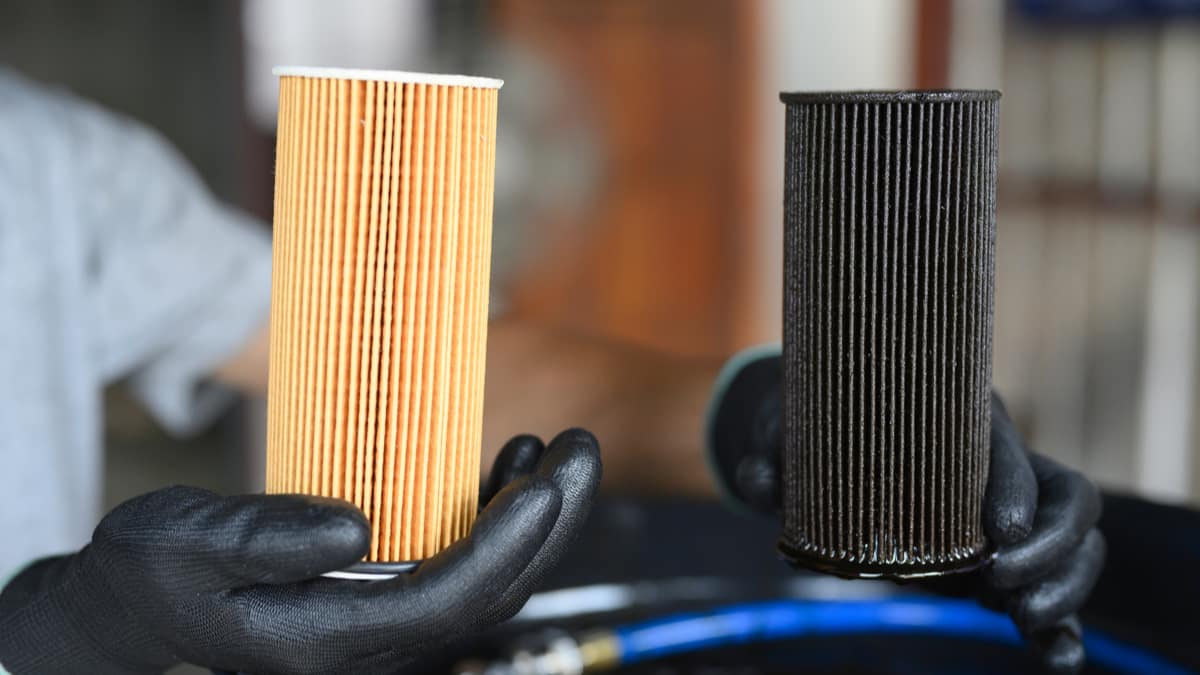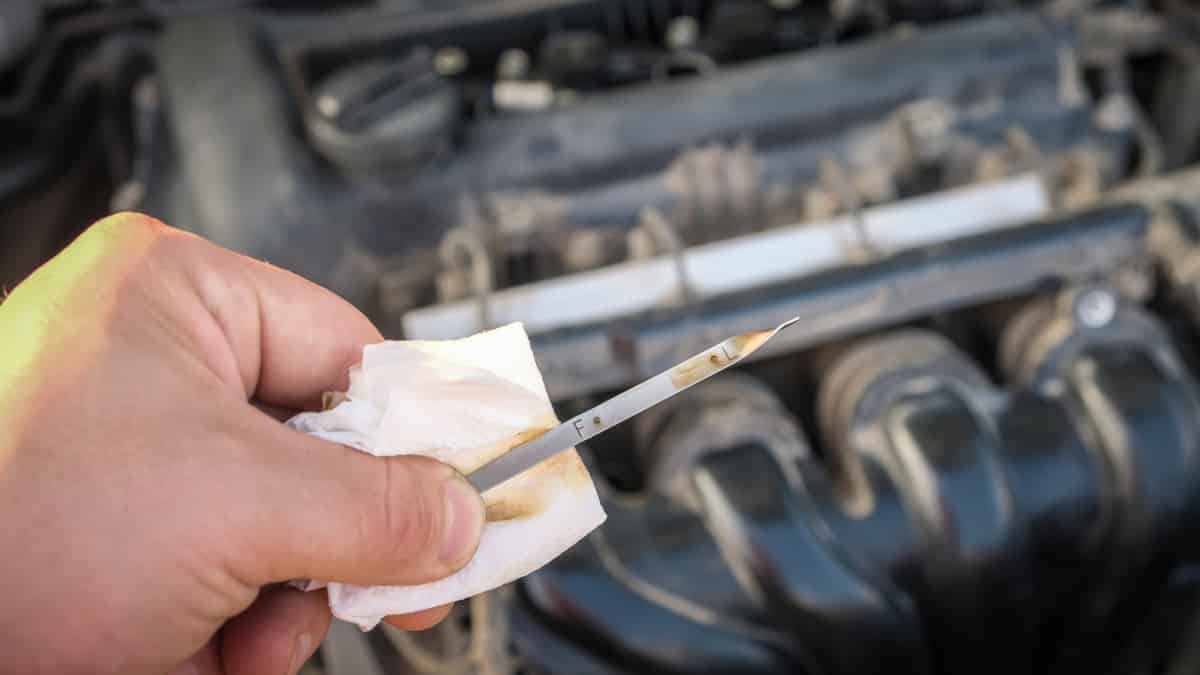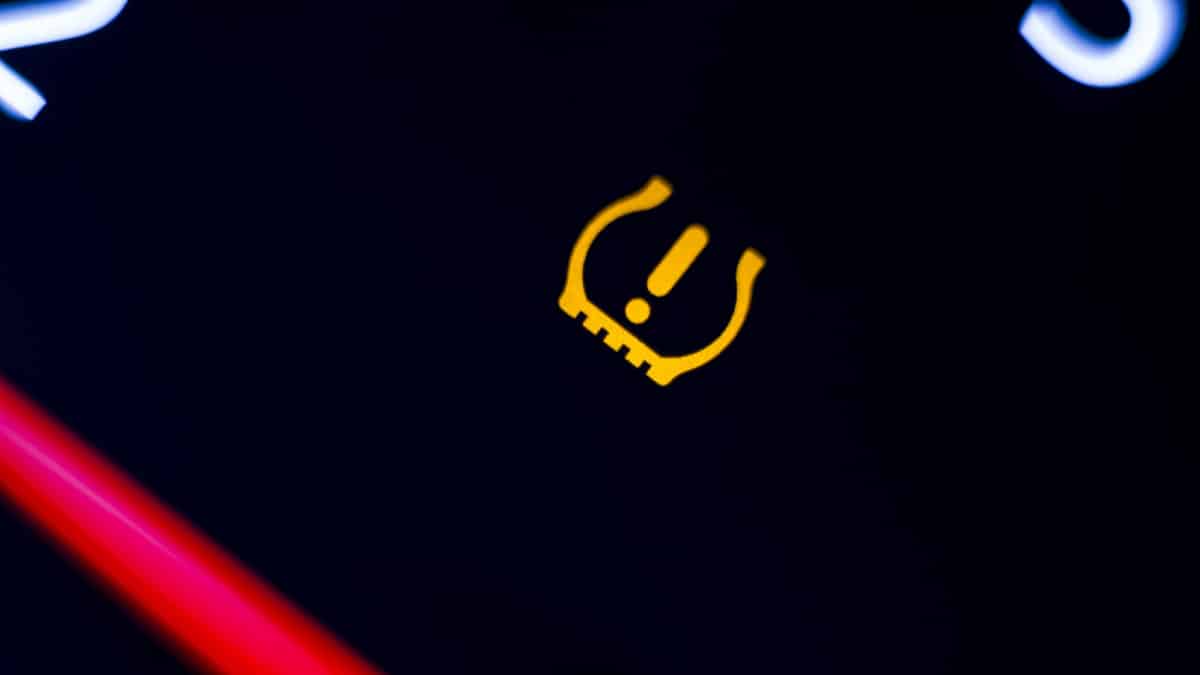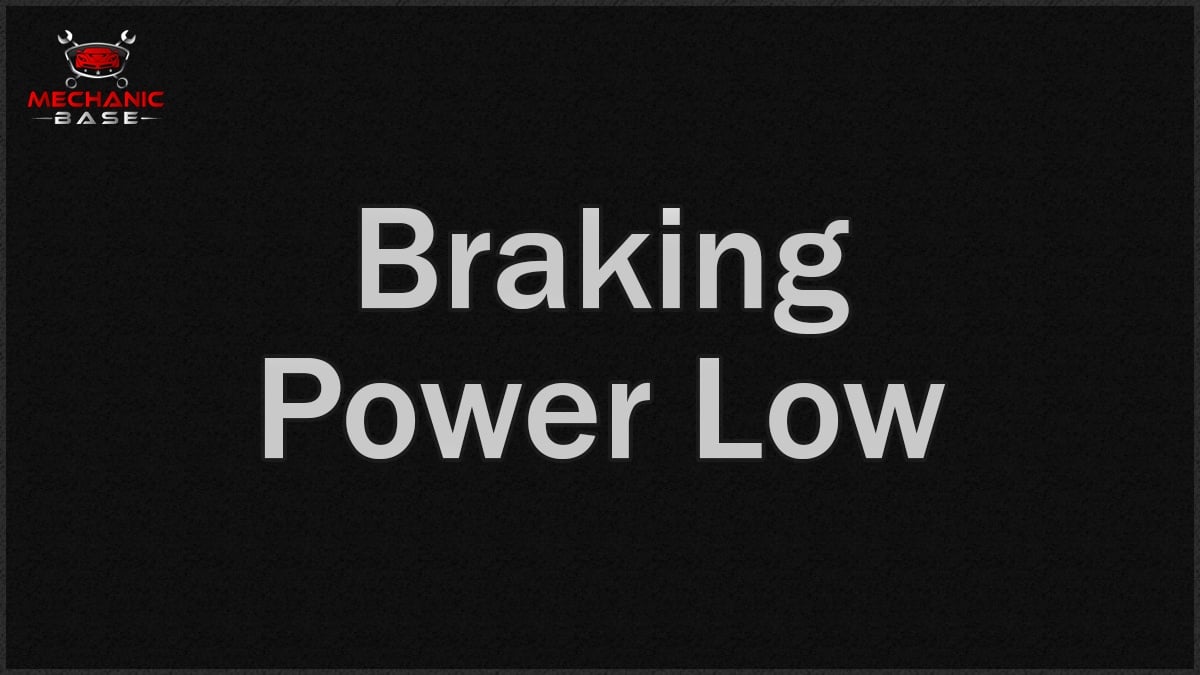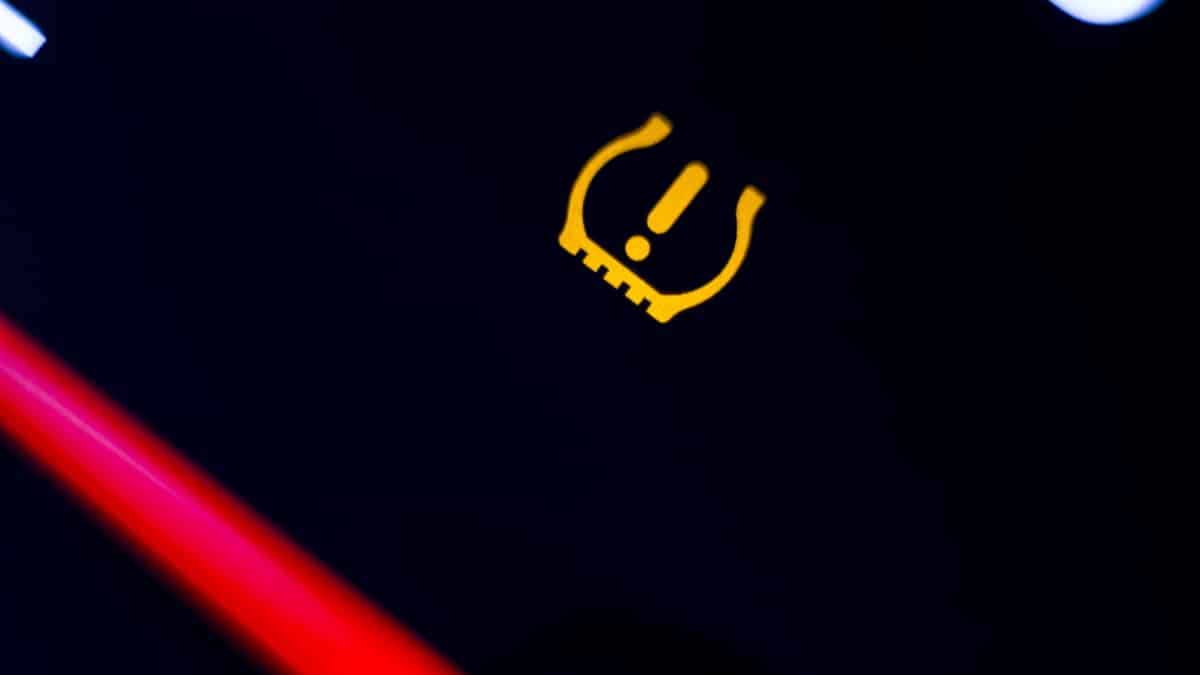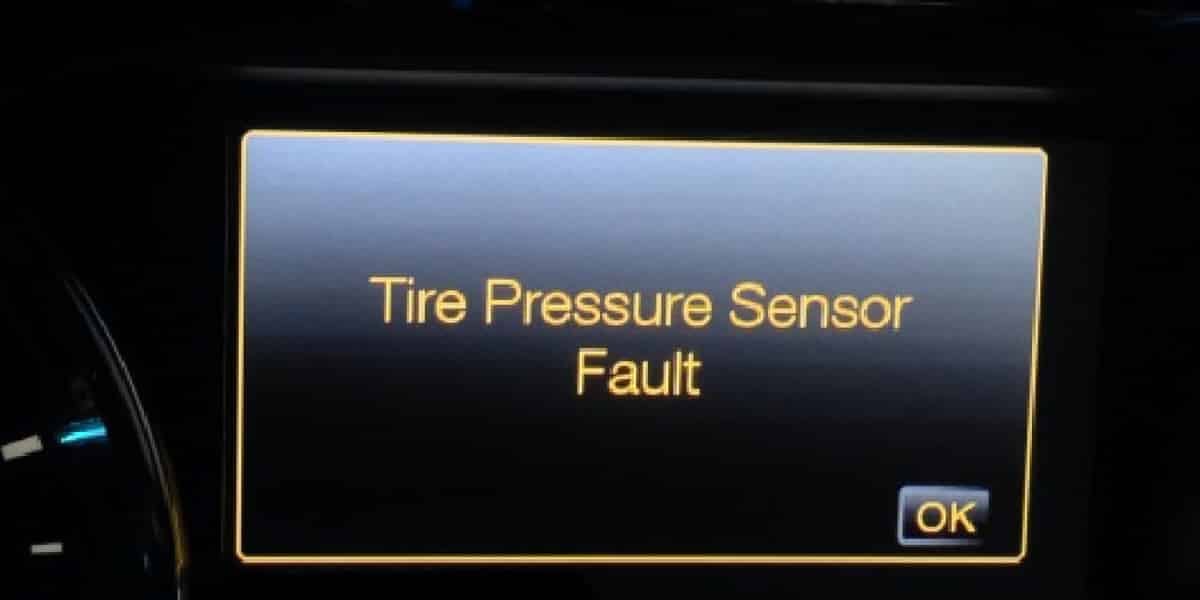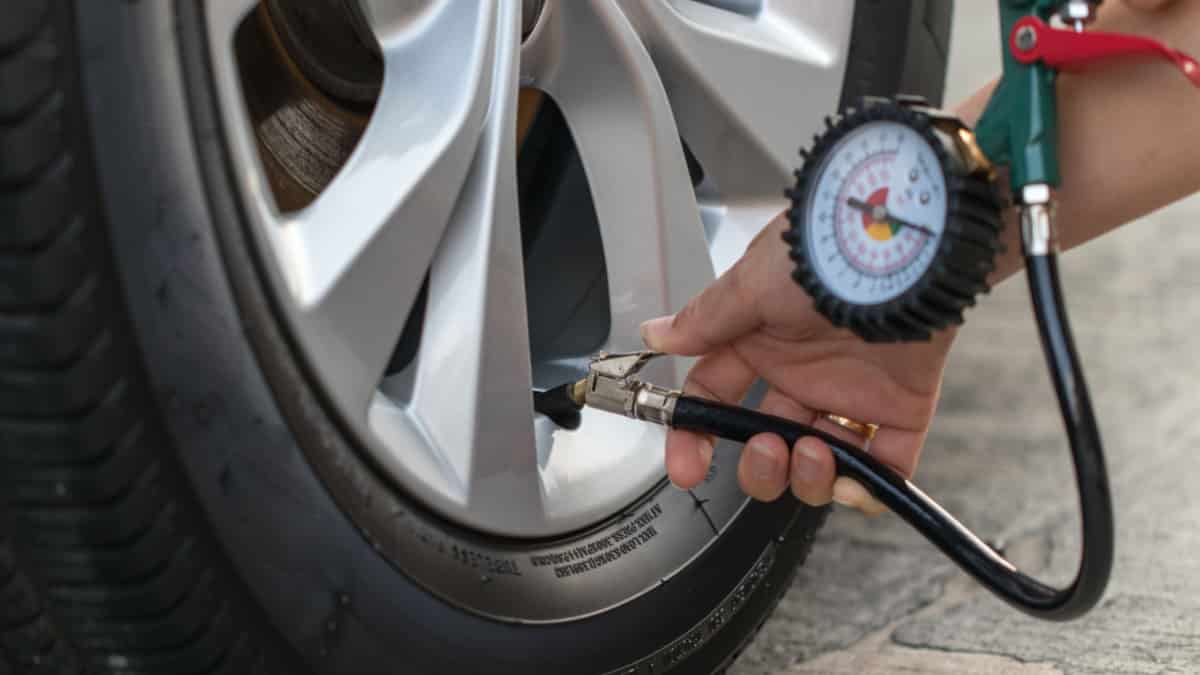Having high oil pressure is one of the things which makes a modern engine’s life so much longer than it used to be.
The oil pressure light shows up on your dashboard if the oil pressure in your car is too low or too high.
Very low oil pressure or no oil pressure at all can actually wreck your engine within just a few seconds, and it is, therefore, important to take this light very seriously. Do not ignore it.
But what could cause the oil pressure light to illuminate, and is it really just low oil pressure that causes it to show up? Let’s find out!
What Causes An Oil Pressure Warning Light?
The most common cause of a low oil pressure warning light coming on is a low oil level. It can also be caused by a faulty oil pump, pickup tube, clogged oil filter or an internal oil leak. It could be a false alarm, caused by a bad oil pressure sensor or faulty wiring.
As said, there are actually two scenarios when the oil pressure light illuminates. It can either be a false alarm or a problem with the oil pressure sensor or the wirings to it.
The other scenario is that your engine actually has low oil pressure, which is a little bit more serious. Therefore, we recommend starting checking the oil pressure with a manual oil pressure guide to know where to start your troubleshooting. Here is a video of how to check the oil pressure.
Here is a more detailed list of the most common causes of an oil pressure light on your dashboard:
1. Low Engine Oil Level
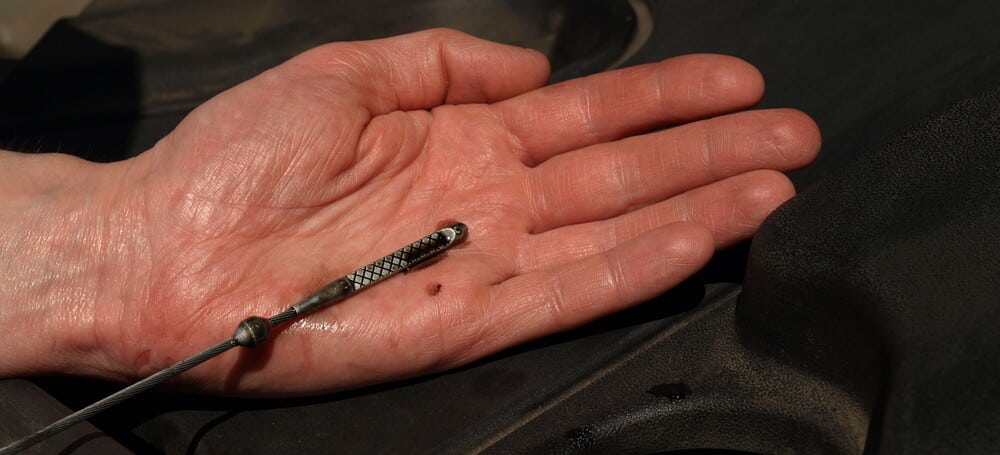
To achieve proper oil pressure in the engine, the engine needs to have oil available to pressurize. If there is no oil to pressurize, it will be impossible for the oil pump to properly do its job.
If your oil pressure light comes on and sometimes disappears, especially when you turn the car, a low engine oil level might be the cause. You may also notice a yellow oil can symbol on your dashboard.
Checking the engine oil level is pretty straightforward. Just check your car’s service manual, and you will find instructions there on how to do it properly.
However, as a car owner, it is your responsibility to check the oil level regularly. This is a vital part of regular car maintenance. You may easily destroy your engine if you drive without checking your oil level on a regular basis.
RELATED: Should You Check the Engine Oil Hot Or Cold?
2. Faulty Oil Pressure Sensor
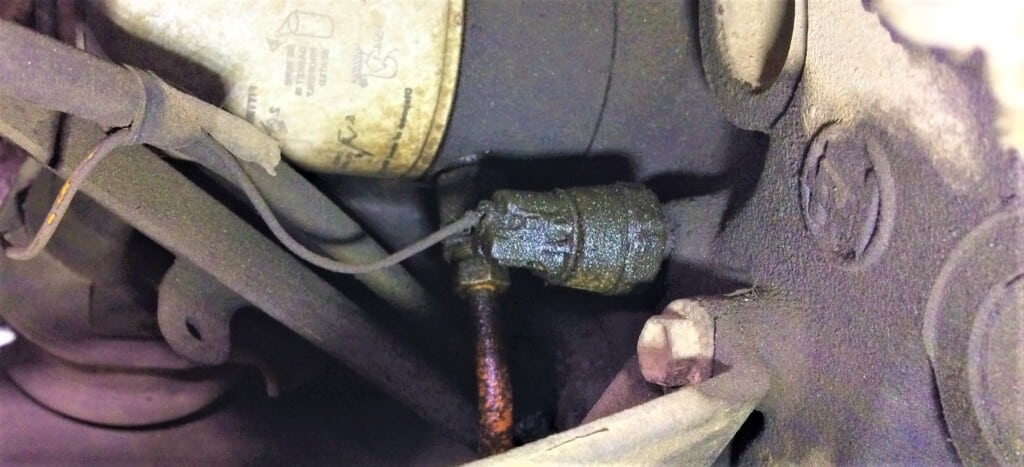
The oil pressure is actually the sensor that monitors the engine’s oil pressure, and its only job is to switch the oil pressure light on or off. These sensors are often made of plastic, and it is not unheard of for these sensors to fail.
If you locate it on the engine block and you see a lot of engine oil around it, that may be a sign that there is a crack in the sensor, which may cause it to fail to read the oil pressure properly.
You can measure these sensors’ resistance with a multimeter to determine if they are functional or not. You need to find the right values for the specific sensor, though. Here is a video of how you can check it: How to test an oil pressure sensor
RELATED: Symptoms of a Bad Oil Pressure Sensor & Location
3. Faulty Oil Pressure Sensor Wirings
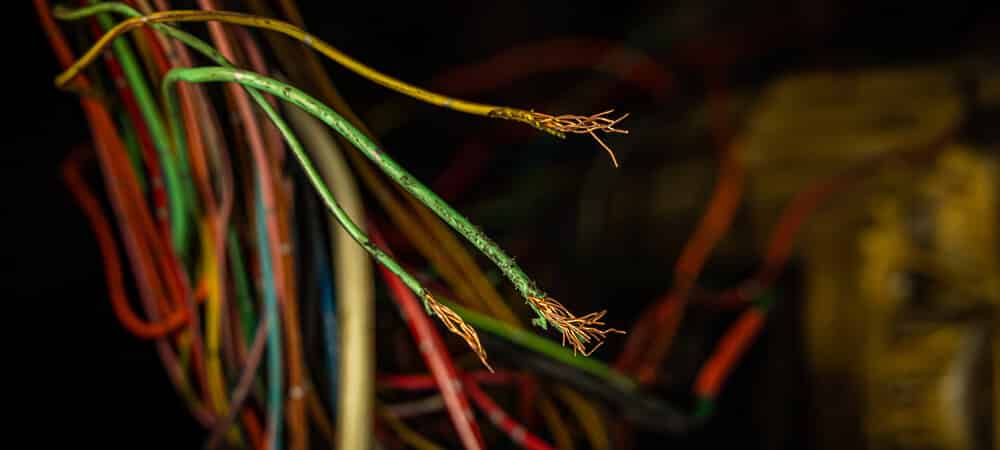
For the sensor to function, it needs one or two wires going between the instrument cluster and the oil pressure sensor.
The engine compartment becomes hot while you are driving, and there are constant vibrations. This can cause wirings to get a bad connection or actually fail and break off completely.
When the instrument cluster can’t feel the signal from the oil pressure sensor because of a broken wire or bad connection, it will light up the oil pressure light.
Check the connector at the oil pressure sensor for any corrosion signs, and make sure that the wires look good.
The next step is to measure the wiring, but I’m not going to explain how to do that in this article. At the very least, you will need a wiring diagram and some basic car electrical skills.
It is not very common for the wires to go bad, so it is recommended to check the rest of the potential causes in this article first.
4. Faulty Oil Pump
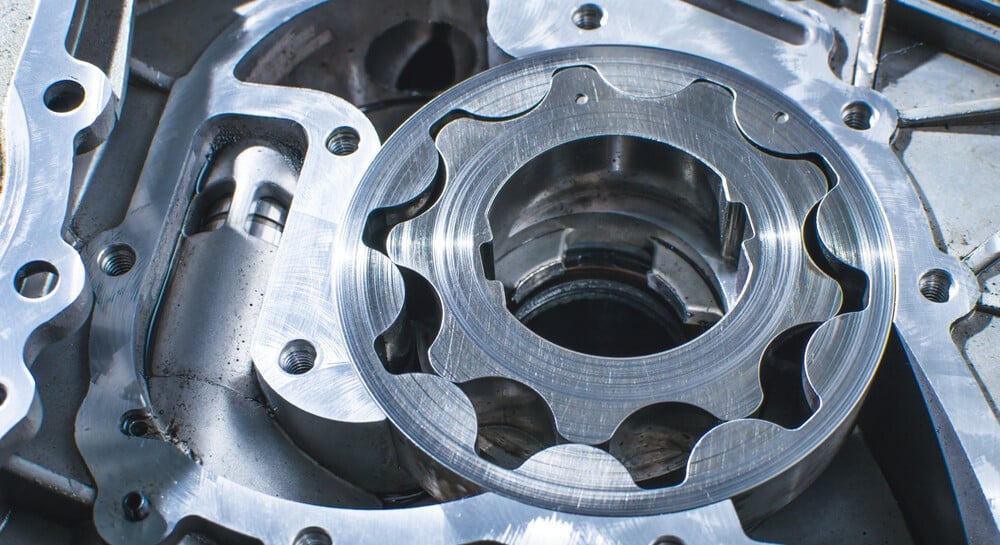
The oil pump is the pump that pressurizes the oil inside of the engine. A chain often drives it from the crankshaft, but it can also be built directly around the crankshaft.
It sometimes happens that this oil pump fails, which can cause a low oil pressure. The low oil pressure will cause the oil pressure light to show up on your dashboard.
The oil pump also has an overpressure valve inside of it, which can fail, and this will also cause the oil pressure to drop.
However, to replace this valve, you often need to disassemble the whole engine, so you anyways want to replace the whole oil pump instead of just the valve.
RELATED: Symptoms of a Bad Oil Pump & Location
5. Clogged Oil Pickup Tube
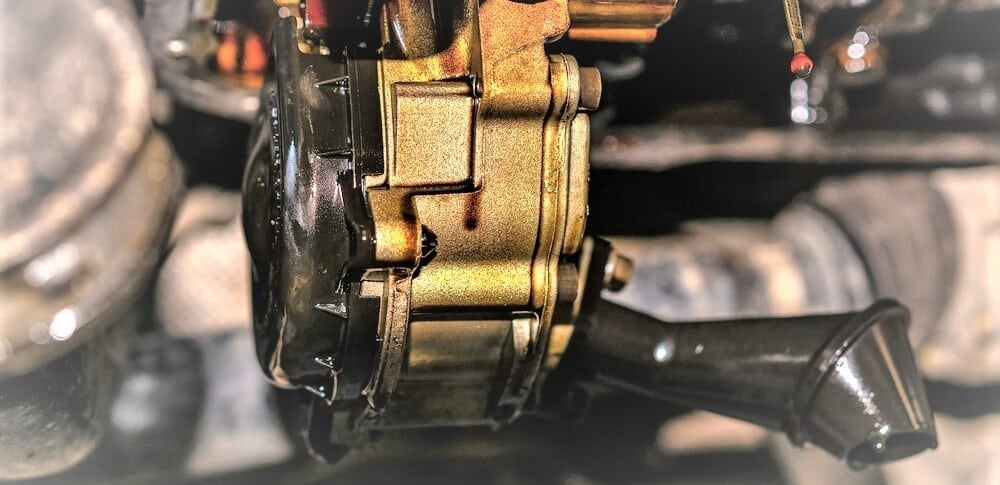
For the oil pump to reach the oil all the way from the bottom of the oil pan, it must have a tube. Unfortunately, dirt is also collected on the bottom of the oil pan.
This tube contains a “net” to prevent dirt and other parts from getting sucked into the oil pump. If your car is old, and especially if the car’s oil maintenance has been bad, this pickup tube can get clogged by dirt and other oil sludge.
When this tube gets clogged, it will cause the oil pump not to suck oil anymore, resulting in low oil pressure.
To fix this issue, you need to remove the oil pan and clean or replace the oil pump pickup tube.
6. Clogged Oil filter
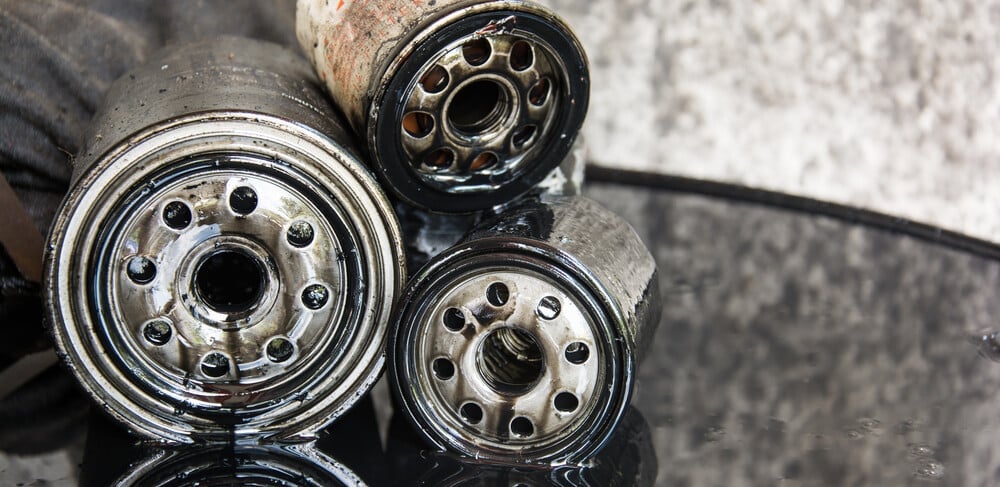
Inside a car engine, there are often many metal chips, carbon deposits, and other debris. The oil filter plays an important role in filtering all these contaminants and preventing them from entering the engine.
During regular maintenance of the engine, the mechanic replaces the oil filter. If you follow the schedule of oil changes recommended for your car engine, there is no risk of getting a clogged oil filter.
However, if you haven’t taken care of your car’s service maintenance properly, you may actually get a clogged oil filter caused by oil sludge. Your oil pressure to drop, causing an oil pressure light on your dashboard.
7. Faulty Instrument Cluster
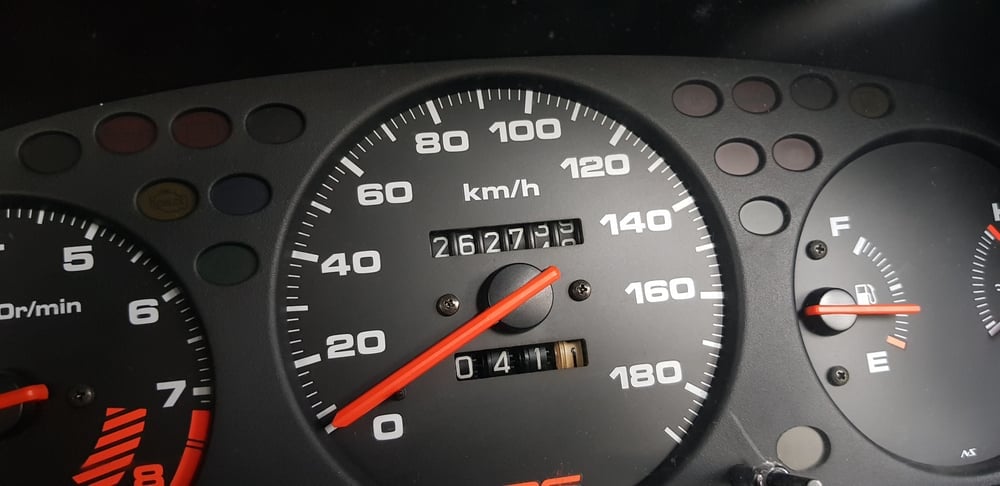
It’s possible that there isn’t any problem with the sensor or low oil pressure at all. It may actually just be a problem with the instrument cluster.
Inside the instrument cluster, there are many solderings, and in some car models, cracks can appear in these solderings. This will cause the connection to get worse, and eventually, it will light up the oil pressure light.
To find these solderings, you need to help a professional who knows how to disassemble the cluster and check for cracks.
To replace the cluster, you often need to reprogram it to the vehicle with a diagnostic tool, because the immobilizer is often integrated into it. This can often only be done by an authorized dealer.
8. Internal Oil Leak
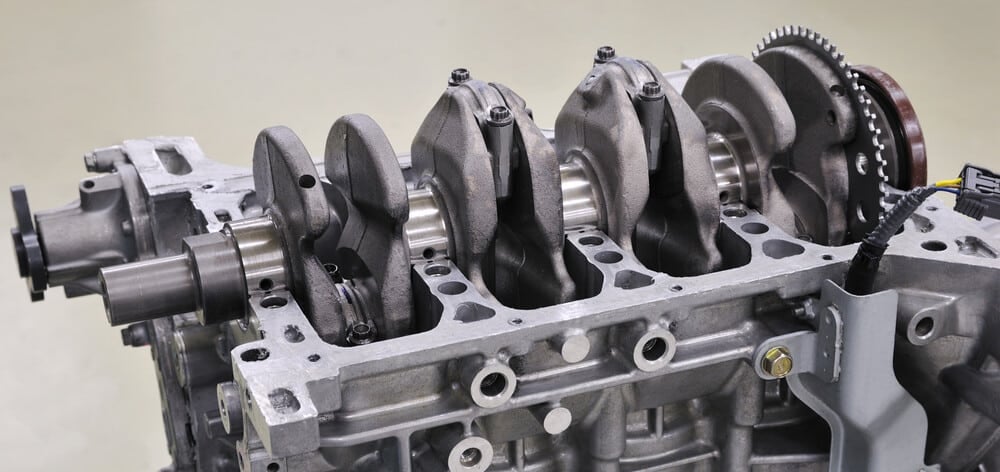
Internal oil leaks mean that the oil is leaking inside the engine, and you cannot see it without disassembling the engine. This is a fairly rare scenario and should only be considered if you have eliminated all other possible causes.
Internal oil leaks are also very difficult to find, and you will need to disassemble the engine to look for cracks or other signs of leaks.
9. Clogged oil passages

Most of the engine oil is stored in the oil pan. The oil pump pressurizes the oil to circulate to the engine and the subsequent moving parts.
As soon as the oil leaves the pump, it moves through the oil filter. This removes most of the impurities. The oil then flows through the crankshaft and the head of the car engine.
However, if any of these oil passages are clogged, it may cause the oil not to reach the oil pressure sensor, and it will cause the oil pressure to become low.
This isn’t a very common problem either, and everything else should be considered first before you look into it.
10. Wear of engine parts
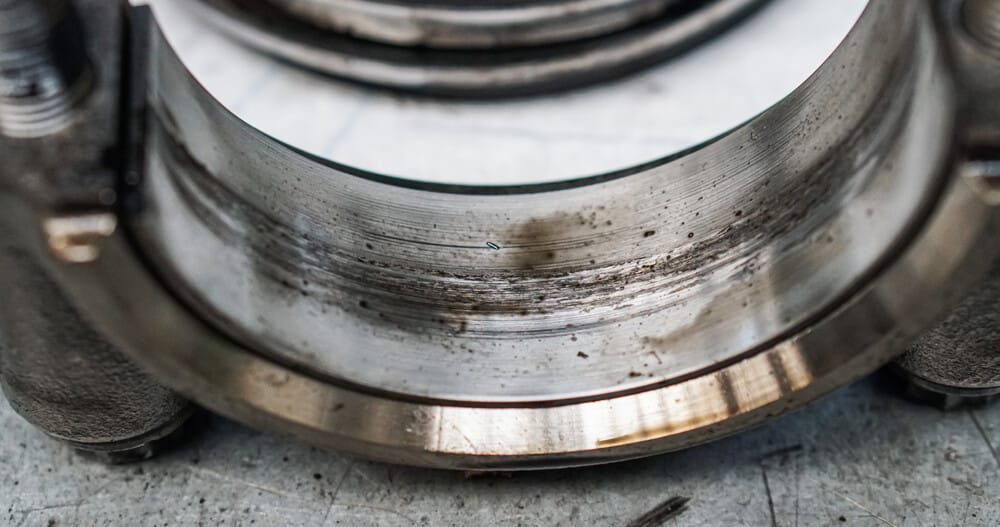
Oil is needed to keep the crankshaft, cam bearings, and other moving parts working at their best.
When these components wear out like bad bearings, oil begins to leak through the openings. This leak might contribute to low oil pressure.
If you have noticed a slowly decreasing oil pressure in your engine over time, it can definitely be a sign of wear inside of your engine.
RELATED: Rod Knock – Causes, Information, and Fixes
Categories: Engine Oil, Troubleshooting, Warning Lights
